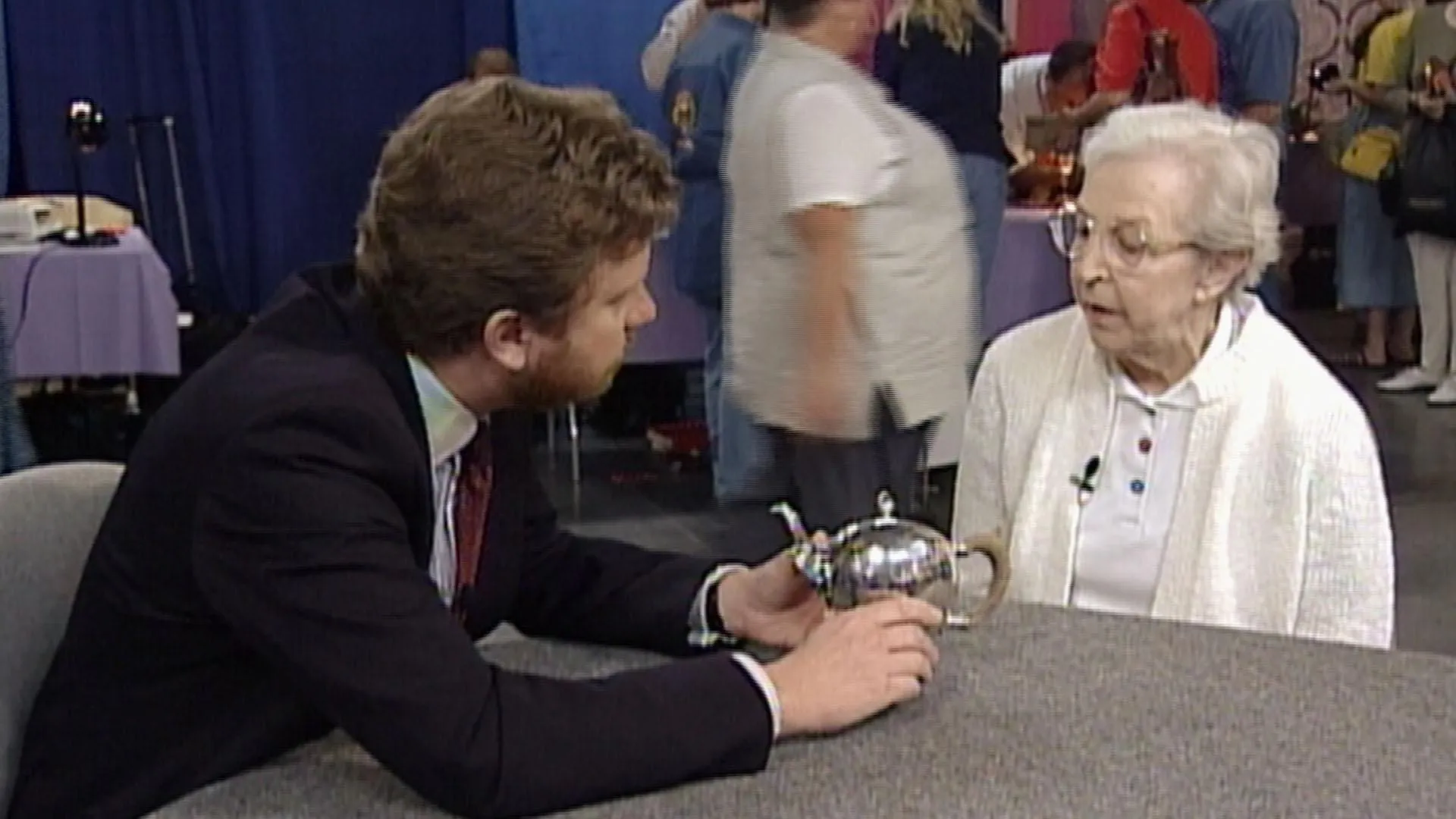GUEST: It's come down mother to daughter since it was made. My aunt gave it to me because she didn't have a daughter.
APPRAISER: Well, it was made in the 18th century on Long Island by Elias Pelletreau, who was a Huguenot silversmith who was working in the middle of the 18th century right through the Revolutionary Period. Of course, teapots from the Revolutionary Period are always small. Tea was very expensive in the 18th century, and every prosperous American family, just like their counterparts in England, wanted to have tea. After the revolution and the Boston Tea Party, tea became less popular, and a lot of the more patriotic families bought coffee pots instead. But this dates, I would say, from the period just before the revolution, probably about 1760, 1765. Now, one thing to bear in mind is that just because an object is marked "E.P." doesn't mean to say that it's by the famous Elias Pelletreau. There are lots of pieces made in the 19th century, 100 years ago, in silver plate, and they were stamped "E.P.," which in fact means "electroplate." So it's a bit of a-- a word of warning there, because Elias Pelletreau was not prolific. He didn't make more than 100 or so pieces during his lifetime. On the base, with the maker's mark, there's also some initials which look like they are contemporary with the teapot. Do you know who these are?
GUEST: David and Phoebe.
APPRAISER: Okay, and they're your ancestors?
GUEST: Mm-hmm.
APPRAISER: Okay. Probably originally this was part of a set. There were probably a creamer and sugar bowl that went with it.
GUEST: Well, yes, I know there was a creamer.
APPRAISER: Tea sets get split up, flatware sets get split up. And it's a shame, actually, from the, just the sheer value point of view, because tea sets are always worth a premium if they're complete. But, in any event, a single teapot by Elias Pelletreau like this is quite a significant piece. It's obviously had quite a bit of tea in it, as you can see, but still, it has a really nice color. The patina's very nice. And the fact that it's come down in the family adds to its price. And I would say, at the moment, this is worth somewhere in the region of $20,000, probably.
GUEST: That's nice to know. (laughs)
APPRAISER: But obviously worth far more to you as a piece of family.
GUEST: Yes, I'm not about to let it go. I have a daughter who has two daughters herself, so we'll see if it will go down that way.
APPRAISER: So it can keep going down in the family?
GUEST: Mm-hmm, yes.
APPRAISER: Good.











